As someone who has spent countless hours in the kitchen experimenting with different cooking techniques, I’m always searching for cookware that strikes the perfect balance between durability, versatility, and overall performance. Over the years, I’ve tried everything from traditional stainless steel pans to fully nonstick options, and each type comes with its own compromises. When I first heard about HexClad—a hybrid cookware brand that combines stainless steel with a ceramic-based nonstick coating and is famously endorsed by Gordon Ramsay—I was immediately intrigued but also a bit skeptical. Could a single pan really merge the searing power and heat retention of stainless steel with the ease of cleaning and nonstick convenience that Teflon offers? I wanted to see whether it could genuinely live up to the hype and justify its premium price. After months of cooking a wide variety of meals on HexClad pans, from delicate omelets to perfectly seared steaks and sautéed vegetables, I’ve formed a well-rounded opinion. In this review, I’ll share my personal experiences, highlighting both the strengths and potential limitations, so you can decide whether HexClad deserves a place in your kitchen.
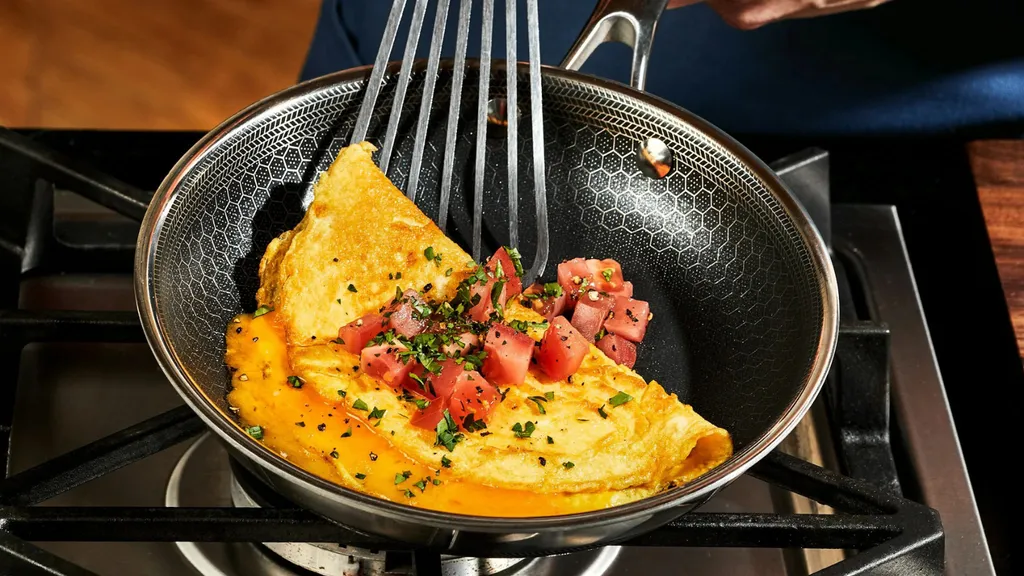
Design and Build
The first thing that really stood out to me when I received my HexClad pan was its striking hexagonal surface pattern. At first glance, it looks like a modern design statement, but as I began to cook with it, I realized that this pattern isn’t just for show—it’s a core part of the hybrid technology that sets HexClad apart from traditional pans. The raised stainless steel ridges create a sturdy, durable cooking surface capable of achieving excellent browning and searing, while the recessed valleys are coated with a ceramic-based nonstick layer, which allows food to release more easily than it would on pure stainless steel. Holding the pan in my hand, I immediately noticed how well-balanced it felt: it’s not overly heavy, yet it has enough heft to remain stable on the stovetop, giving me confidence when I’m tossing vegetables or sliding a steak out of the pan. The combination of these materials and the thoughtful construction results in a pan that feels both modern and professional, and I was impressed by how much attention went into even small design details, like the ergonomics of the handle and the smooth finishing around the edges. Over the weeks, I also appreciated the fact that it’s compatible with multiple heat sources, including induction, gas, and electric stoves, which makes it incredibly versatile for someone like me who often switches between different cooking setups.
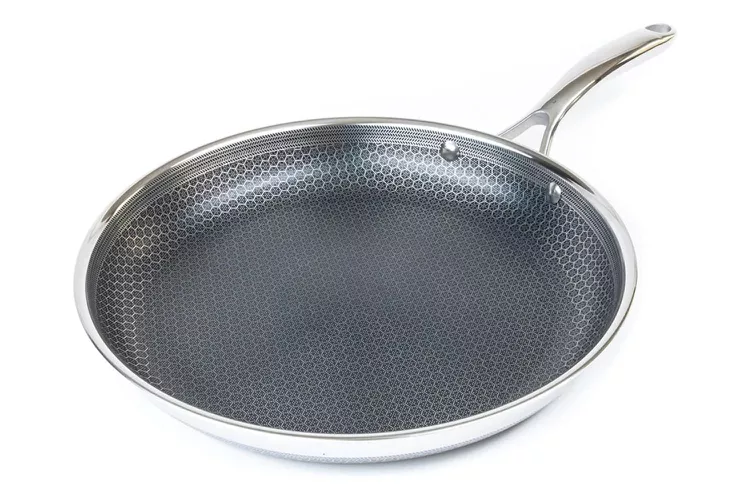
Cooking Performance
Cooking with HexClad is an experience that stands out from anything I’ve used before, and it’s taken me some time to adjust to its hybrid properties. While it does require a small amount of oil for optimal results, I found that it heats very evenly across the cooking surface, which helps prevent hot spots and allows for consistent browning. I used it to fry salmon, and the skin came out perfectly crispy without sticking, which is something that would have been trickier on a traditional stainless steel pan. I also sautéed a variety of vegetables, and they cooked evenly without burning or sticking excessively. However, it’s important to note that HexClad is not a completely slick Teflon-style nonstick pan. If the pan isn’t preheated properly or if you attempt to cook with very low oil, some food may cling slightly to the surface. Over time, I’ve learned to adjust my technique—preheating the pan and adding a small amount of oil creates a surprisingly seamless cooking experience. Another feature I appreciate is its oven-safe design, which allows me to finish dishes in the oven without transferring them to another pan, saving both time and cleanup effort. This adaptability has made HexClad one of the most versatile tools in my kitchen, capable of handling everything from quick weekday meals to more elaborate weekend cooking projects.
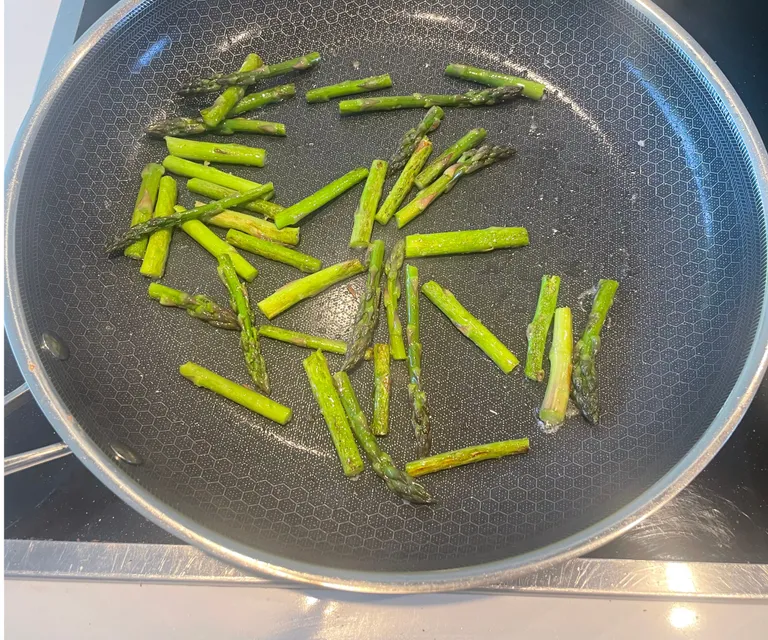
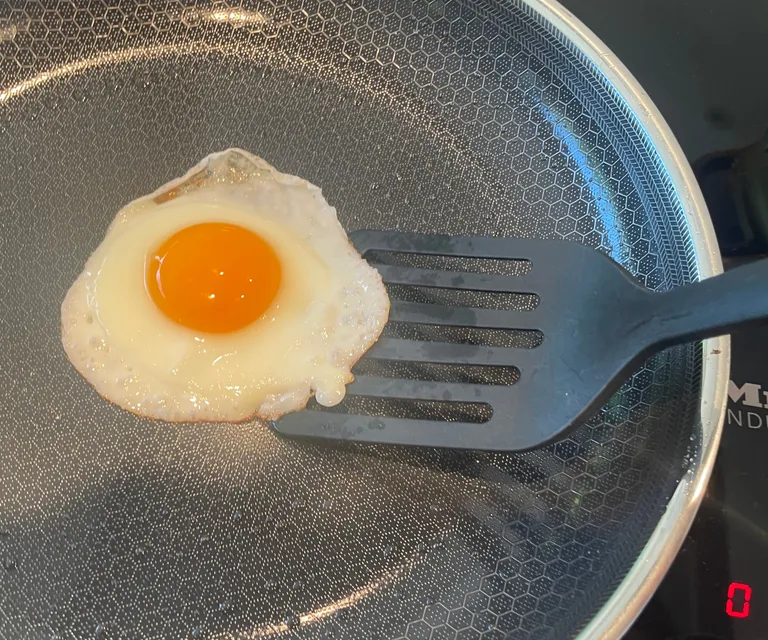
Cleaning and Maintenance
One of the features that initially drew me to HexClad was its claim of being dishwasher safe, and while I’ve occasionally run it through the dishwasher, I’ve found that hand-washing is just as effortless, if not more so. Because of the combination of stainless steel ridges and the ceramic-coated valleys, food rarely clings stubbornly, and a simple rinse with warm water and a sponge is often all that’s needed to restore the pan to a clean state. Over time, I’ve noticed a slight patina developing on the stainless steel, which doesn’t affect cooking performance but does add a sense of character and history to the pan—it almost feels like the pan ages gracefully with use. Unlike delicate nonstick pans that require careful handling and special utensils, HexClad feels forgiving; I’ve even used metal spatulas and tongs without leaving scratches or damaging the cooking surface. I’ve also experimented with cooking sticky sauces and acidic ingredients like tomatoes, and I was pleased to see that cleanup remained relatively easy, with no lingering residue or discoloration. Overall, the maintenance of HexClad is far simpler than I expected for a premium hybrid pan, and it has encouraged me to cook a wider variety of dishes without worrying about ruining the pan.
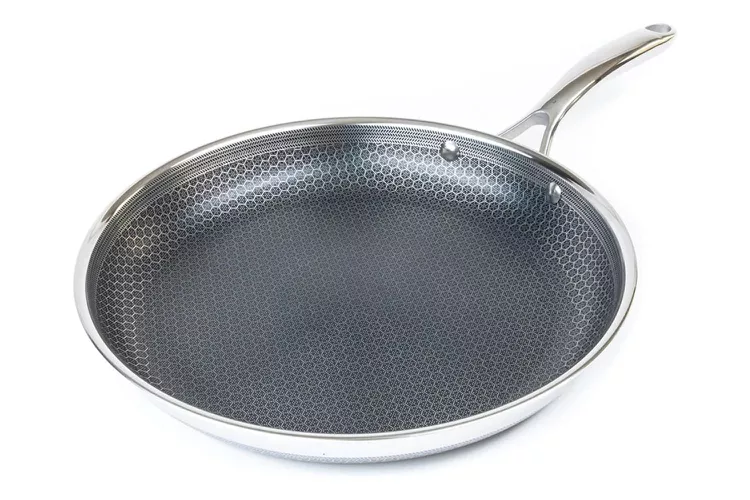
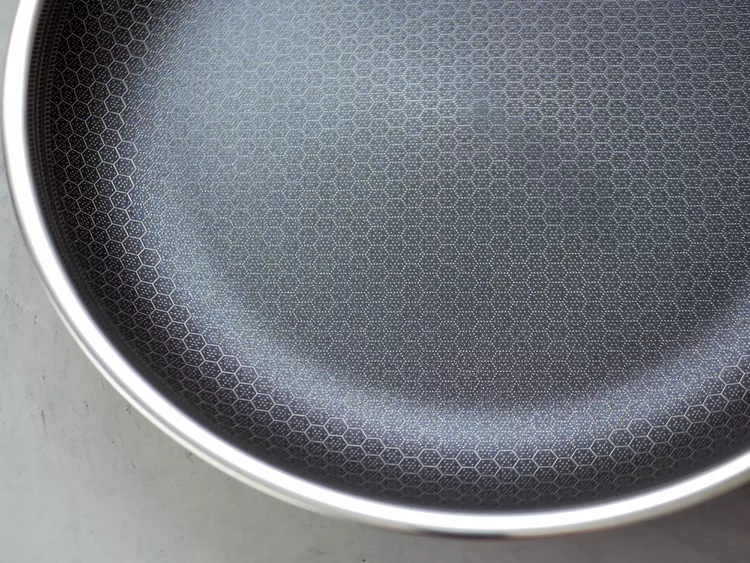
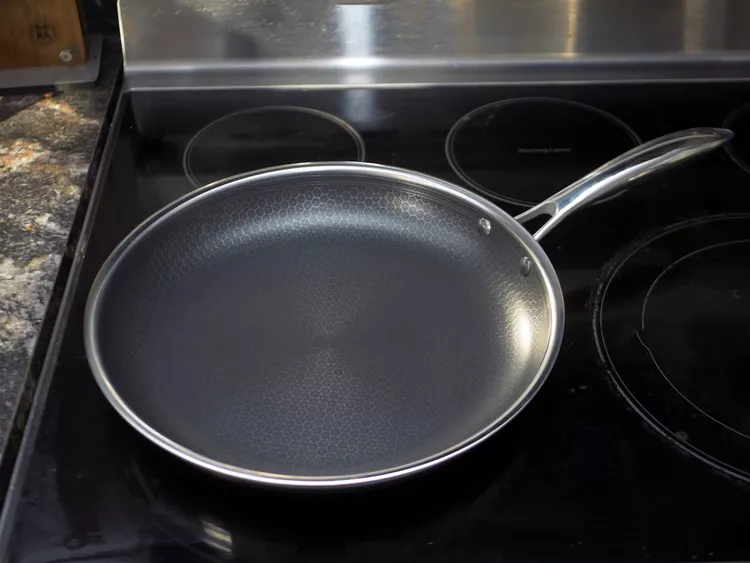
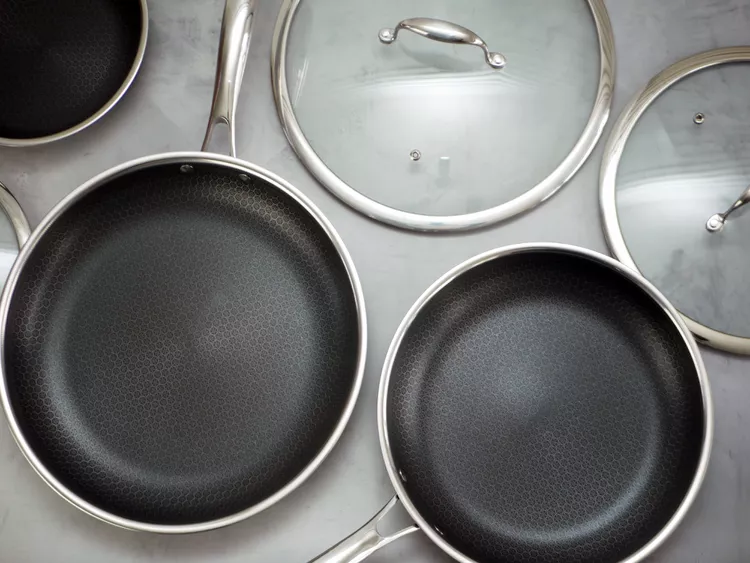
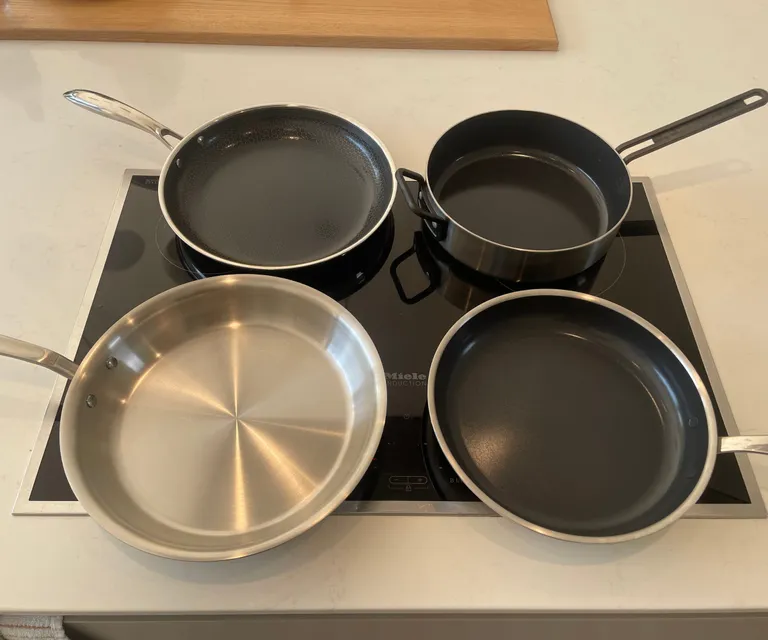
Hexclad Cookware can be purchased on Hexclad’s official website
Price and Value
If I’m being completely honest, the price of HexClad is high compared to most standard nonstick and even many premium stainless steel pans. A single frying pan costs significantly more than other options I’ve used over the years. That said, I’ve come to view it as a long-term investment rather than just another kitchen purchase. HexClad comes with a lifetime warranty, which adds reassurance that the pan is designed to last for decades if cared for properly. Considering its versatility, durability, and ability to perform multiple cooking functions—searing, sautéing, light nonstick cooking—the premium price feels more justified. Personally, I’ve found that I reach for HexClad more often than any other pan in my kitchen because it reduces the number of different cookware pieces I need for different tasks. In my view, the upfront cost is balanced by the convenience and quality it delivers over time, making it a worthy consideration for anyone serious about cooking.
Pros and Cons
What We Loved ✅
1. Hybrid Stainless Steel + Ceramic Nonstick Design
From my experience, the hybrid construction is the real standout feature of HexClad. The stainless steel ridges allow for excellent searing and browning, giving food a texture and flavor that is hard to achieve with traditional nonstick pans. At the same time, the ceramic-coated valleys provide just enough release to make cleaning and cooking easier than pure stainless steel. I’ve cooked delicate eggs, seared meats, and even sticky sauces, and the pan performed consistently well. This combination gives me confidence that I can cook almost anything without needing multiple specialized pans, which has simplified my kitchen workflow considerably.
2. Scratch-Resistant, Metal Utensil Safe
Unlike many nonstick pans I’ve used, HexClad is surprisingly forgiving with metal utensils. I frequently use metal spatulas and tongs when flipping meat or stirring sautéed vegetables, and so far, I haven’t noticed any scratches or surface damage. This is a major advantage for someone like me who doesn’t want to worry about ruining a nonstick surface, and it gives me the freedom to cook more aggressively or experiment with different techniques without hesitation.
3. Oven and Dishwasher Safe
Another benefit I’ve appreciated is the oven- and dishwasher-safe design. I can start cooking on the stovetop and finish a dish in the oven without needing a separate baking dish, which saves both time and cleanup. Occasionally, I run the pan through the dishwasher, and it comes out just as clean as with hand-washing, though I personally prefer to rinse it gently by hand. This level of convenience makes it easier for me to cook complex meals, host dinner parties, or even just handle weekday meals with minimal effort.
4. Even Heating and Great Versatility
HexClad heats evenly across the cooking surface, which prevents hot spots and ensures consistent results. I’ve fried salmon, sautéed onions, and seared steak, and the outcomes have been excellent across the board. Its versatility means I don’t need separate pans for different cooking methods, saving both space and money in the long run. I’ve also found that it adapts well to multiple heat sources, including gas, electric, and induction stoves, which is a huge plus for a home cook like me with varied kitchen setups.
5. Lifetime Warranty
HexClad’s lifetime warranty offers peace of mind. Even if something were to happen to the pan, I know the company will stand behind its product. This warranty also reinforces my sense that I’m investing in cookware designed to last decades, which makes the upfront cost more justifiable. Knowing that I won’t have to replace this pan anytime soon gives me confidence in its long-term value.
What Could Be Better ❌
1. High Price
The most obvious drawback is cost. HexClad is significantly more expensive than traditional nonstick or stainless steel pans, and the upfront investment can be a barrier for many home cooks. While I personally consider it worth the money given the performance and durability, casual cooks or those on a tight budget might find the price prohibitive. It’s important to weigh whether the versatility and longevity justify the initial cost before purchasing.
2. Some Sticking Without Proper Preheating or Oil
While HexClad performs better than pure stainless steel in terms of food release, it’s not a completely slick Teflon-style pan. Early in my experience, I noticed that eggs or other delicate foods would stick if the pan wasn’t preheated correctly or if I used too little oil. Adjusting my technique solved most of these issues, but it requires a small learning curve compared to traditional nonstick cookware.
3. Heavier Than Traditional Nonstick Pans
HexClad’s hybrid construction means it has a bit more weight than conventional nonstick pans. While it’s not unmanageable, it can feel a bit bulky when handling larger portions or transferring food from stovetop to oven. For someone used to ultra-light nonstick cookware, this added weight may take some getting used to, especially during longer cooking sessions or when stirring heavier ingredients.
4. Requires Slightly Different Cooking Technique
Because it’s a hybrid pan, HexClad demands a small adjustment in cooking habits. Preheating is important, and I’ve learned to use a modest amount of oil even for foods that would normally cook without it in a traditional nonstick pan. While this isn’t a major drawback, it does mean you need to understand how the pan behaves to achieve optimal results consistently.
My Verdict
After months of daily use, HexClad has proven to be a reliable and versatile addition to my kitchen. It won’t replace every pan I own, nor does it provide the fully slick experience of a traditional Teflon nonstick pan—but that’s not the point. What it does offer is a unique combination of stainless steel searing power and ceramic nonstick convenience, all in a single piece of cookware. I often reach for it when I want a pan that can handle a wide variety of tasks, from searing steaks and frying eggs to sautéing vegetables and finishing dishes in the oven. While it’s certainly an investment, its performance, durability, and adaptability make it one of the most valuable pans in my collection. For anyone who spends a lot of time cooking and wants a high-quality, long-lasting pan that simplifies meal preparation, HexClad is definitely worth considering.
FAQs
Does HexClad have Teflon in it?
Teflon is the trademarked term for PTFE made by Chemours and is not used by HexClad. Instead, the brand now uses ceramic to coat the nonstick valleys of its cookware.
Are HexClad pans nontoxic?
Since the pans use a ceramic-like coating to give them their nonstick abilities instead of PFAS, they are technically considered non-toxic. The term isn’t well defined or regulated, though, and it doesn’t mean the pans have been comprehensively studied and concluded to be harmless. We don’t have enough good research on ceramic coatings or cookware in general to make conclusive determinations about toxicity.
Why is food sticking to my HexClad pan?
Because HexClad uses stainless steel in addition to a ceramic nonstick coating, you can get some sticking unless you oil the pan or heat it up before adding food.
Do HexClad pans last long?
HexClad pans have a lifetime warranty, provided you use the pan properly. You can read more about their warranty coverage here. We will continue to use the pans we have from HexClad to gauge their longevity over time. Thus far, they’ve held up well, only developing a patina after frequent use, but no damage.
Is HexClad cookware oven safe?
Yes,HexClad cookware is oven safe up to 900 degrees, so you can bake frittatas or finish meat dishes in the oven for a tender finish. However, the glass lids aren’t recommended for oven use. While they can withstand temperatures up to 400 degrees, they are better used on the stove to keep the steam in at lower temperatures.
Do you need to season HexClad pans?
Yes, you need to season HexClad’s Hybrid Pans with a neutral oil before first use. I used this Grapeseed oil that’s sold on Amazon. If your pan starts to lose the non-stick, you can deep clean it and reapply the seasoning oil to get it back to A+ performance.